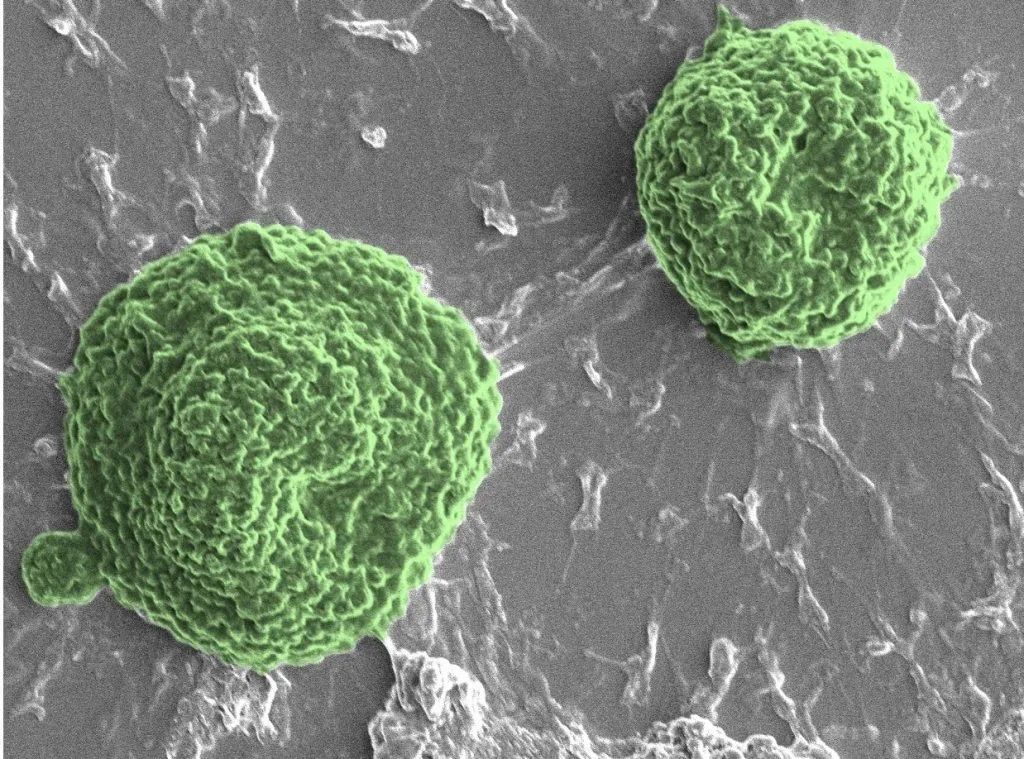
During the progression of cancer, solid tumors often grow in areas lacking nutrients and oxygen. The abnormal structure of blood vessels and the high growth rate of tumors lead to cells that are far from blood vessels being in a state of hypoxia or low oxygen levels.
The hypoxic environment within tumors reduces the efficacy of treatments such as radiotherapy, photodynamic therapy, and chemotherapy, which rely on the generation of reactive oxygen species (ROS). This is mainly because these therapies depend on the oxygen concentration in tumor cells to produce ROS—a highly reactive derivative of molecular oxygen that can cause cell damage.
Professor Utkan Demirci from the Department of Radiology at Stanford University School of Medicine leads a team that has developed a biocomposite microbot called “Volbots” to alter the environment at tumor sites, alleviating hypoxia and thus enhancing the efficacy of cancer treatment.
Demirci states, “We use Volbots as in situ micro-oxygen factories to address the issue of tumor hypoxia.” Previous scientists have attempted various strategies to improve tumor hypoxia, including using micro/nano carriers to deliver red blood cells, hemoglobin, and nanobubbles, but ultimately, they all exhibited insufficient oxygen-carrying capacity.
The biocomposite microbots consist of biological and artificial components. While the “biological part” of the robot usually provides mobility, scientists can add extra functionalities to perform specific tasks, such as releasing drugs in the body to treat malignant tissues.
Demirci’s team designed their biocomposite microbots using Volvox algae, naming the robots after this algae as it serves as the power source. They can move through synchronized movements of thousands of hair-like projections called flagella on their surface. Demirci mentions, “Volvox also has other features, such as innate sensing capabilities that allow them to move towards light sources and the ability to produce oxygen through photosynthesis.”

Scanning electron microscope image of Volvox (green pseudo-color)
Like other algae, Volvox uses chlorophyll to absorb light energy. When exposed to red light, they exhibit higher photosynthetic activity and oxygen production, which is why Demirci’s team regulates the oxygen concentration produced by the algae in tumor cells using red light.
The outer surface of the Volbots is designed with magnetic nanoparticles, allowing the team to guide their movement using an external magnetic field. These nanoparticles can also be detected through magnetic resonance imaging (MRI) and photothermal imaging, enabling scientists to easily track them in vivo. Demirci explains, “The nanoparticles on the biocomposite microbots can also carry drugs and generate heat when exposed to near-infrared light, which can be used for photothermal therapy or controlling drug release.”
The team first evaluated the Volbots by assessing their oxygen production capacity in vitro before tumor-targeted therapy. Demirci states, “We trialed the Volbots in animal models and found that the tumor volume in treated mice decreased.” Their results confirmed that Volvox can alleviate hypoxia in mouse tumors.
The study also found that treatment with Volbots showed no significant toxicity. However, the clearance and release mechanisms of the algae still present some challenges that must be further researched before clinical use.
The team wrote in their paper, “Although there are many ways to optimize clinical translation pathways on the current platform, this multifunctional biocomposite strategy may provide new avenues for the design of biologically-assisted robots, which can then be used in biomedicine, therapy, tumor imaging, and other diseases.”
WILEY
Reference: Utkan Demirci, et al., Volbots: Volvox Microalgae-Based Robots for Multimode Precision Imaging and Therapy, Advanced Functional Materials (2022). DOI: 10.1002/adfm.202201800

AdvancedScienceNews
Official WeChat platform for scientific news under Wiley

Long press the QR code to follow us
Share cutting-edge information|Focus on scientific dynamics
To publish scientific news or request information sharing, please contact: [email protected]